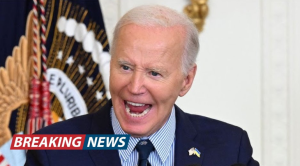For over a decade, Democrats have touted Texas as the next big political prize—a reliably red state on the verge of turning blue due to shifting demographics, particularly its growing Hispanic population. However, a new wave of polling data suggests that the long-anticipated transformation may be slipping further out of reach. Instead of trending Democratic, Texas appears to be doubling down on its conservative identity, with a notable surge in Hispanic support for President Donald Trump upending decades of assumptions.
A New Political Landscape
A recent InsiderAdvantage poll has jolted political observers. Conducted between May 17 and May 19, the survey polled 1,000 likely voters in Texas and found that a stunning 59.6% of Hispanic respondents approve of Trump’s job performance—just six months into his second term. This marks a massive 22-point increase from April, when only 38.4% voiced approval, and 42% expressed disapproval.
The poll’s margin of error is ±3.09%, yet the results reflect a broader trend: Hispanic support for Trump is not an outlier but part of an ongoing realignment that began during his first presidency. In 2016, only 16% of Trump’s voter base was Hispanic. That number jumped to 42% by the 2024 election, according to post-election analysis.
In Texas specifically, Trump won 55% of the Hispanic vote in 2024—a figure that not only defied national expectations but also eclipsed the performance of most recent Republican candidates among this key demographic. Notably, around 25% of Hispanic voters in Texas reported that 2024 was their first time casting a ballot. And among newly registered voters, Trump outperformed his Democratic opponent—another first in modern electoral history.
Economic Tailwinds
What’s behind this dramatic shift? Many analysts point to recent economic developments that have had an outsized impact on Texas. In particular, Apple’s announcement of a new 250,000-square-foot AI server manufacturing plant in Houston has turned heads. The facility is expected to create 20,000 jobs, many of which are targeted toward American workers and local communities.
Tim Cook, CEO of Apple, described the project as a “$500 billion commitment to our country’s future,” highlighting the tech giant’s confidence in American innovation and infrastructure under current federal policies.
These kinds of high-profile economic investments are helping to reshape perceptions of Trump’s economic leadership. Lower energy prices, falling inflation on basic goods, and a slight rollback in the administration’s trade confrontations have all contributed to a sense of stability and optimism—particularly among working-class voters, many of whom are Hispanic.
A Complex Relationship with Immigration
Immigration remains a double-edged sword in Trump’s relationship with Hispanic voters. His administration continues to take a hardline stance against illegal immigration, policies that are polarizing among Hispanic Americans. According to Mark Shanahan, a political science expert at the University of Surrey in the U.K., some established Hispanic citizens support these policies, believing they help protect job markets and maintain the rule of law. Others, particularly those with close family or cultural ties to Central and South America, view such policies as discriminatory and harmful.
“Hispanic voters are not a monolith,” Shanahan said. “On immigration, the community is deeply divided, but it’s the economy that seems to be driving the current upswing in Trump’s approval numbers. Job growth, price stabilization, and visible investments are making an impression.”
He also emphasized the volatility of voter sentiment in today’s media climate. “We’re in a period of yo-yo polling, especially among groups like Hispanic voters. Opinions can shift rapidly based on the news cycle. Trump’s administration remains unpredictable, and support can just as quickly dip if the economic outlook falters or a major scandal erupts.”
Matching Data from Liberal Pollsters
Notably, the InsiderAdvantage poll isn’t the only data point showing Trump’s growing popularity with Hispanic voters. A separate survey from the progressive polling organization Civiqs, in conjunction with Daily Kos, found similar trends. Their May data showed Hispanic support for Trump rising to 57%—a 15-point increase over April’s numbers.
This alignment between conservative and liberal-leaning pollsters lends credibility to the trend and suggests that it cannot simply be dismissed as partisan spin.
Implications for the 2026 and 2028 Elections
The shifting allegiances of Hispanic voters in Texas could have major implications for both state and national politics. Texas has 40 electoral votes, and while Trump already won the state in both 2016 and 2020, Democrats had hoped that continued growth in minority populations would tilt future races in their favor.
So far, that prediction has not materialized. Instead, Republicans have made significant inroads into traditionally Democratic-leaning constituencies, especially in South Texas counties that have long been considered blue strongholds. With more Hispanic voters moving into the Republican column, Texas may be more solidly red in 2028 than it has been in decades.
Furthermore, these developments could reshape campaign strategies for both parties. Democrats may need to rethink their assumptions about Hispanic voters and develop a more targeted outreach strategy that considers economic aspirations and community values, not just immigration policy.
Republicans, meanwhile, may see this as a validation of their messaging and platform—particularly on issues like economic growth, law and order, and American manufacturing. If they can maintain or grow this new coalition, the political calculus for the next decade will look very different than it did in the past.
Conclusion: Is Texas Turning Redder, Not Bluer?
While it is premature to declare Trump an unequivocal success among all Hispanic voters or to assume that Texas will remain red indefinitely, the data points to a powerful trend that Democrats can no longer afford to ignore. The idea that demographic change would automatically result in Democratic dominance was always overly simplistic. Culture, values, economic conditions, and candidate charisma all play roles—and right now, Donald Trump appears to be winning that equation in Texas.
The surge in Hispanic support—verified by both conservative and liberal pollsters—signals a deeper political realignment underway. If Democrats continue to rely on outdated narratives without engaging directly with the needs and priorities of Hispanic Texans, their long-held dream of flipping Texas blue may remain just that: a dream.









